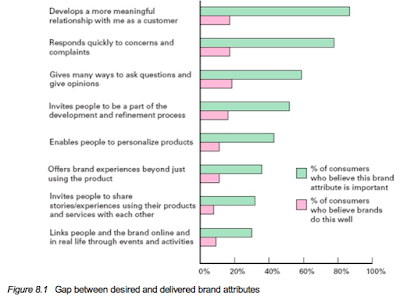"As shown in figure 8.1, while 87 percent of consumers would like to experience a more meaningful relationship with their favored brands, only 17 percent believe companies are currently meeting their expectations. Three particularly promising opportunities to enhance brand strength and business performance warrant further exploration: personalization, community-based marketing, and customer dialogue."Customização - fazer à medida, co-criação
Marketing - recorrer às tribos
Interacção - co-criação
Trecho e figura retirados de "If You're in a Dogfight, Become a Cat!: Strategies for Long-Term Growth"














